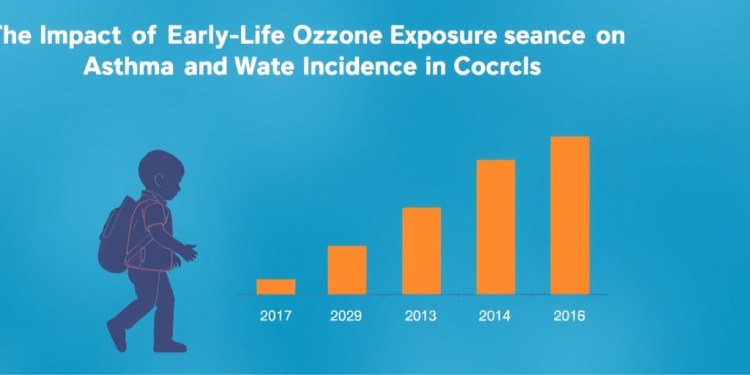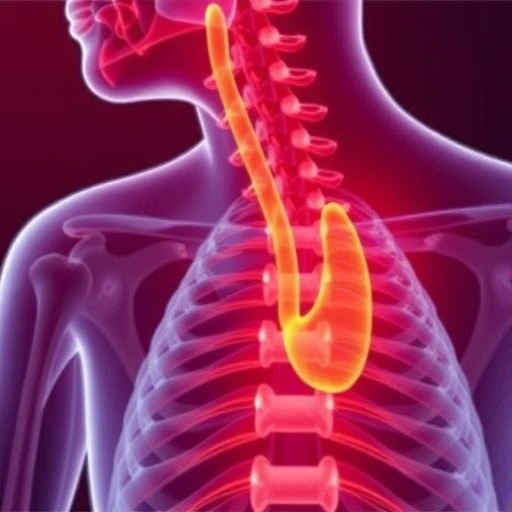
In a groundbreaking cohort study focusing on early-life environmental impacts, researchers have uncovered important connections between ambient ozone exposure and respiratory health challenges among children. Conducted in conditions of relatively low environmental ozone levels, the study highlights how exposure during formative years is linked to the development of asthma and wheeze-related outcomes around the ages of four to six. This critical window of early childhood appears to be most susceptible to the damaging effects of this air pollutant, providing vital insights for public health strategies aimed at reducing asthma prevalence among younger populations.
The findings indicate a troubling association; as children are exposed to ozone in their early years, the risk of developing respiratory issues significantly increases. This is particularly concerning considering that asthma remains one of the most common chronic conditions among children in the United States. The study emphasizes that while the initial impact of early-life exposure is profound, there seems to be a reduction in associated health problems when evaluated at ages eight to nine. This raises critical questions about the long-term effects of early exposure to harmful air pollutants and suggests a phase of resilience as children grow older.
As pollutants are often part of complex mixtures in the atmosphere, the researchers conducted a multifaceted analysis, examining not only ozone levels but also how they interact with other airborne contaminants. The study proposes that regulating and reducing ambient ozone levels could serve as an effective method to alleviate the public health burden of asthma in children. By adopting policies that target pollution reduction, health officials can significantly impact the well-being of younger populations, potentially leading to a decrease in asthma-related hospitalizations and healthcare expenditures.
Understanding the mechanisms that link early-life exposure to respiratory ailments is pivotal for developing preventive strategies. The research suggests that inflammation and airway hyperresponsiveness could be key factors that arise from ozone exposure, leading to long-term respiratory issues. As a potent oxidant, ozone can cause damage to the respiratory tract and trigger inflammatory responses, which may lay the groundwork for chronic asthma development.
In America, the public health ramifications of asthma extend beyond individual health, influencing educational outcomes and socioeconomic factors. Frequent absences from school due to asthma exacerbations can hinder children’s learning opportunities and affect their overall quality of life. Moreover, the healthcare system bears a significant burden due to the costs associated with treating asthma; the combined expenses from emergency room visits, medication, and loss of productivity result in billions of dollars annually.
The study provides an impetus for subjected debates on environmental policies. Policymakers might be encouraged to review and strengthen regulations concerning air quality standards, especially concerning ozone levels. This aligns with broader initiatives aimed at combating climate change and environmental degradation, which are intrinsically linked to air quality and the health of vulnerable populations, including children.
Additionally, the research findings could foster collaborative efforts between environmental scientists and public health officials. An interdisciplinary approach may help craft educational campaigns that raise awareness about the risks of ozone pollution while promoting behavioral changes to mitigate exposure. For instance, advising families on avoiding outdoor activities during high ozone days can be a significant step toward safeguarding children’s health.
The implications of this study enhance existing knowledge about environmental determinants of health, particularly in pediatric populations. Conducting further longitudinal studies will be essential to establish causality and understand how exposure patterns evolve throughout childhood. The ability to track these exposures in a real-world context can provide more comprehensive data to inform future health recommendations and environmental policies.
Moreover, as we witness urbanization and increasing exposure to various environmental pollutants, the findings serve as a reminder of the need for ongoing research in environmental health. Issues such as climate change continue to exacerbate air quality, making it increasingly important to prioritize studies that uncover the effects of such changes on human health, particularly among at-risk groups.
In conclusion, the study illuminates the need for critical reevaluation of environmental health policies and presents a compelling case for increased regulation of ozone levels. Reducing early-life exposure to harmful air pollutants not only protects vulnerable populations but also holds the potential to decrease the overall incidence of asthma and related health conditions in children. Such preventive measures can pave the way for healthier generations and less strained healthcare systems, making air quality improvement a potentially transformative public health initiative.
Subject of Research: Early-life ozone exposure and asthma
Article Title: The Impact of Early-Life Ozone Exposure on Childhood Asthma: A Cohort Study
News Publication Date: [Insert Date]
Web References: [Insert URLs]
References: [Insert Citations]
Image Credits: [Insert Credits]
Keywords Ozone, Air pollution, Asthma, Environmental health, Public health, Children, Respiratory disorders, Policy, Cohort studies
Tags: air pollution and wheeze incidencechildhood asthma developmentchronic respiratory conditions in childrencohort study on environmental healthearly-life ozone exposureenvironmental impacts on asthmalong-term effects of ozone exposureozone pollution and child healthpublic health strategies for asthma preventionresilience to respiratory issues in older childrenrespiratory health challenges in childrensusceptibility of young children to air pollutants





